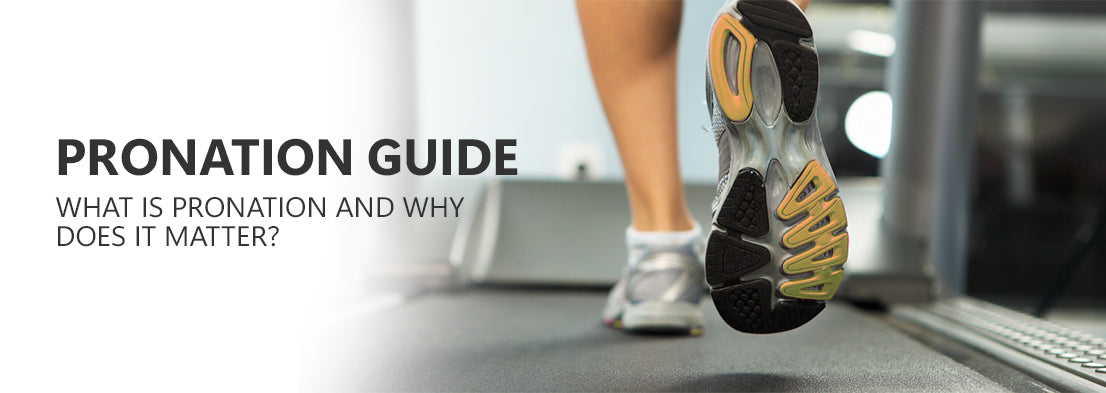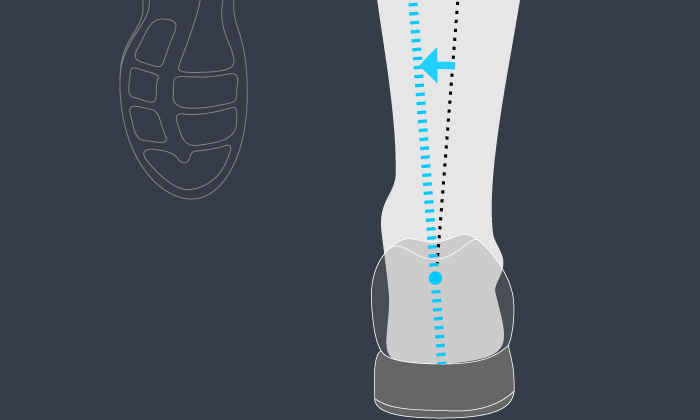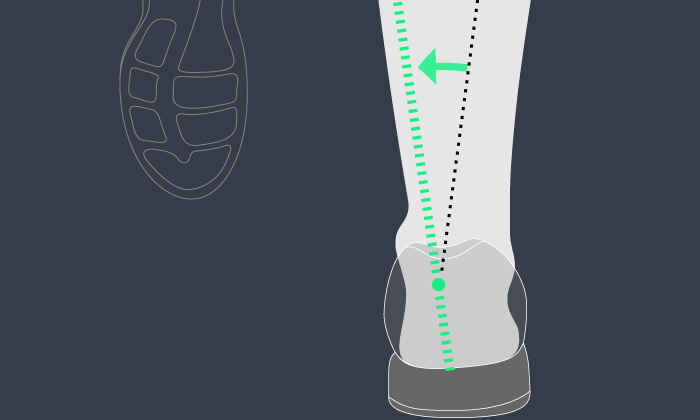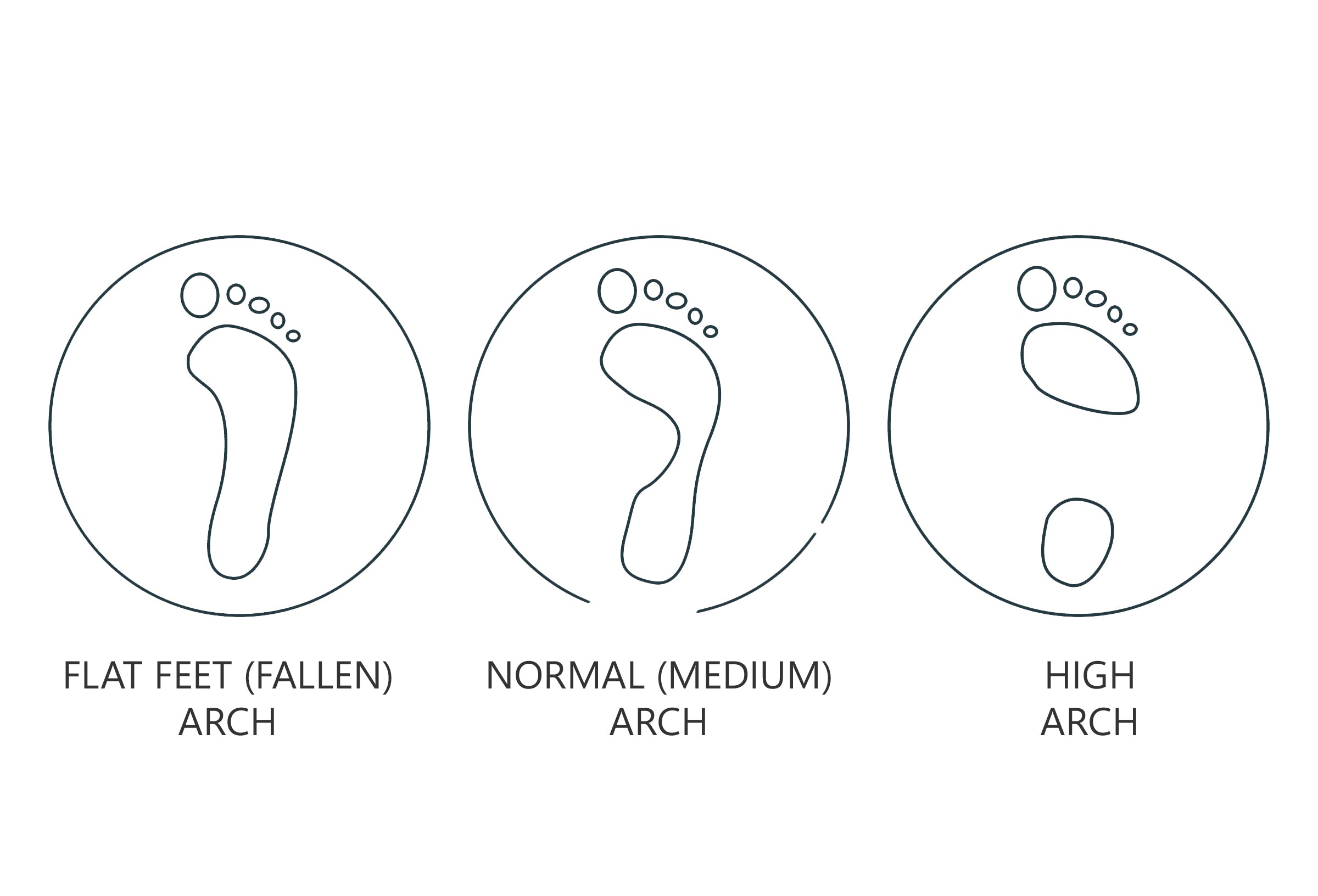
PRONATION OF THE FOOT
Pronation is part of the natural movement of the human body and refers to the way your foot rolls inward for impact distribution upon landing. Understanding your pronation type can help you find a comfortable running shoe.
- Underpronators (supinators) need a lot of cushioning to avoid strong impact
- Neutral pronators can wear a wide variety of shoes
- Overpronators should look for support or structured cushioning shoes
UNDERSTANDING PRONATION
When your foot strikes the ground, it rolls inward to absorb the shock, and the arch supports on average three times your body weight. People who roll inward too much or not enough can experience running injuries due to less effective shock absorption.

How Your Foot Contacts the Ground
UNDERPRONATION
The outer side of the heel hits the ground at an increased angle with little or no normal pronation, causing a large transmission of shock through the lower leg.
Push Off: pressure on smaller toes on outside of foot.
Considered Injuries: plantar fasciitis, shin splints, ankle strain.
Foot type: high arches.

How Your Foot Contacts the Ground
NEUTRAL
Your foot lands on outside of the heel, then rolls inward (pronates) to absorb shock and support body weight
Push Off: even distribution from the front of the foot.
Considered Injuries: less likely due to effective shock absorption, but neutral runners are not immune to injury.
Foot Type: normal-size arches

How Your Foot Contacts the Ground
OVERPRONATION
Your foot lands on outside of heel, then rolls inward (pronates) excessively, transferring weight to inner edge instead of ball of the foot
Push Off: big toe and second toe do majority of the work
Considered Injuries: shin splints, plantar fasciitis, bunions, heel spurs
Foot Type: low arches or flat feet
HOW TO DETERMINE YOUR PRONATION TYPE
There are a number of methods you can use to determine your pronation type at home.
-

Wear Patterns
Wear patterns won't provide the full picture of gait analysis, but they can give additional clues about the impact on your feet. This can give you an idea of where you may need extra support and cushioning in your running shoes.
NEUTRAL PRONATORS:
- Soles of your running shoes show wear in an S-shaped pattern, from the outer (lateral) heel to the big toe
- If you put your shoes on a flat surface, you may not notice any tilt
OVERPRONATORS:
- Extra wear on the inside of the heel and under the ball of the foot, especially the big toe
- If you put your shoes on a flat surface, you may notice an inward tilt
UNDERPRONATORS
- Outside of your running shoes show the most wear
- If you put your running shoes on a flat surface, you may notice a slight outward tilt
-

The Wet Test
The Wet Foot Test allows you to determine pronation by looking at your footprint. To do this, wet your foot and then step onto a piece of cardboard. Then match your footprint to the corresponding level of pronation
FLAT FEET - NEUTRAL PRONATORS
- If your impression looks the most like this one, you are a neutral pronator (20-30% of runners are). You strike the floor with your heel, then while you roll towards the toes, your arch lightly collapse inward absorbing the impact.
NORMAL - OVER PRONATORS
- This foot impression looks like the whole sole of the foot. If this is the footstep that most closely resembles yours, then you are an over pronator.
NORMAL - UNDER PRONATORS
- Supinators’ feet don’t flex enough to provide an effective shock absorption during the run, making impact with the floor very hard and surely dangerous.
FREQUENTLY ASKED QUESTIONS
To help you choose the right shoe, we have collected some of the most answered questions.
Am I neutral or do I pronate
Use the pronation guide above to determine whether you are a neutral, over or under pronator
What type of shoe do I require for the type of running I intend doing ?
Neutral and overpronators require a neutral running shoe. Underpronators will benefit from a stability running shoe
What size shoe am I ?
Use our shoe sizing guide to help you find the perfect running shoe fit
What is the lifespan of a shoe ?
It's generally accepted that the standard lifespan of road running shoes is between 500 to 800km. So if you're running 30km per week, you'll probably need to replace your running shoes after around 4 - 6 months of wear.
How do I keep my running shoes clean ?
Don't put your running shoes in the washing machine. Soaking your shoes in water can damage the fabric and adhesives.
Keep in mind that while running shoes are designed to be durable on the road, they’re made with special materials that are best treated delicately.
What you’ll need to clean your shoes:
- Mild detergent or clothing-safe soap
- A soft scrubbing brush or toothbrush
- A sponge
- Paper towels
- A bucket of warm water


